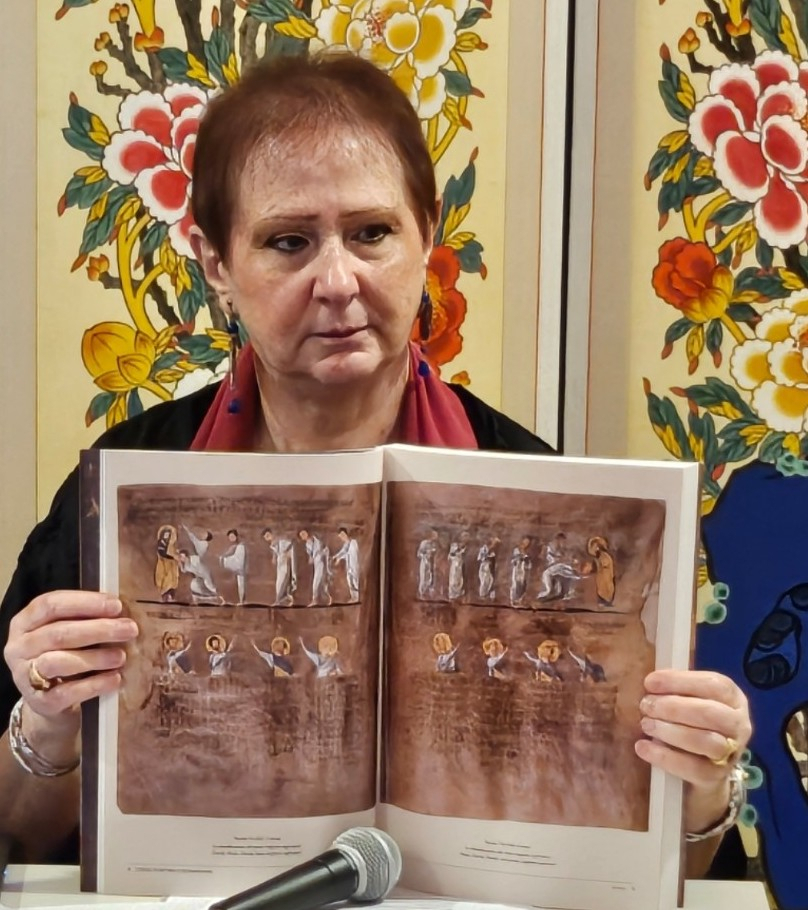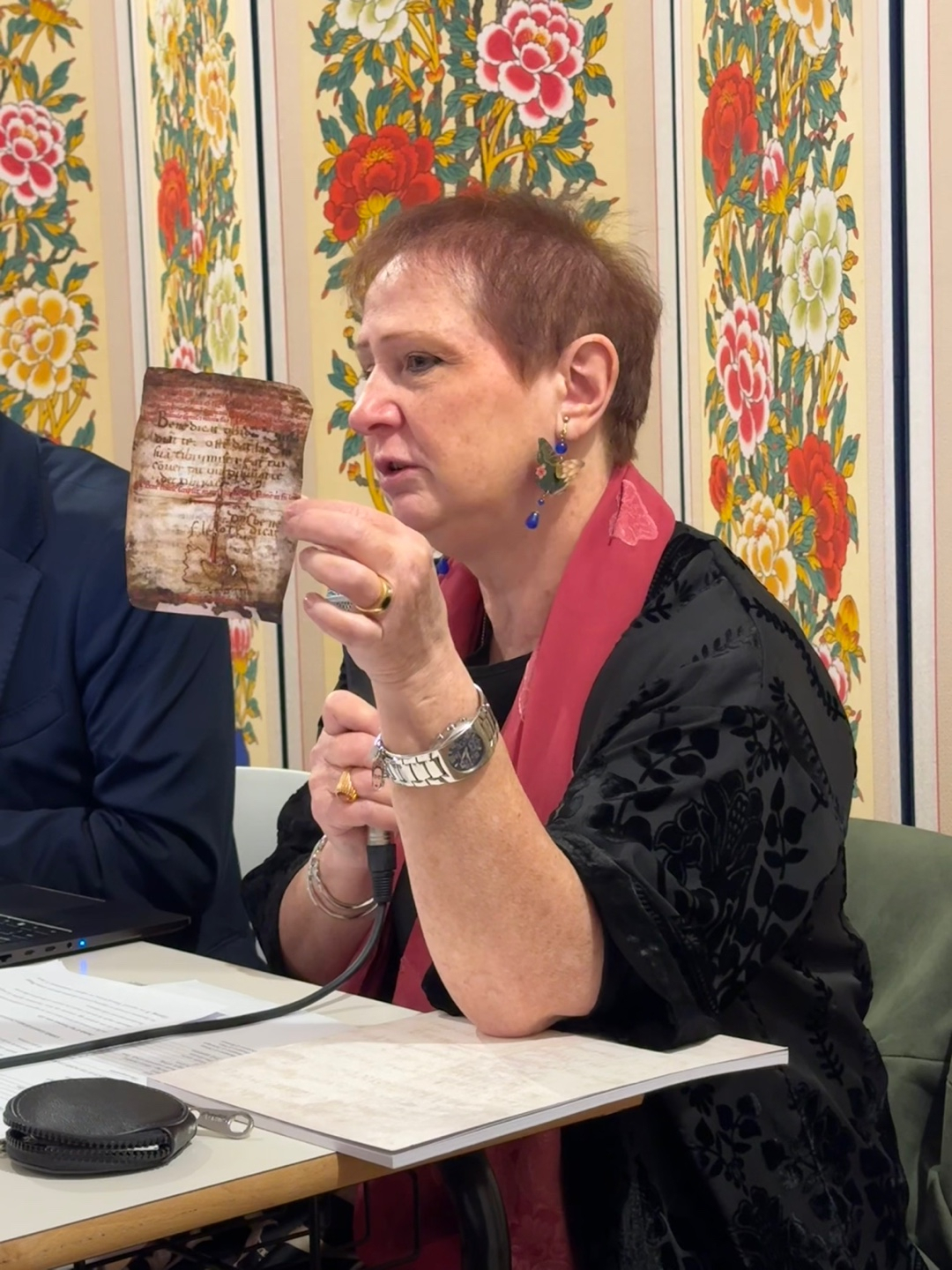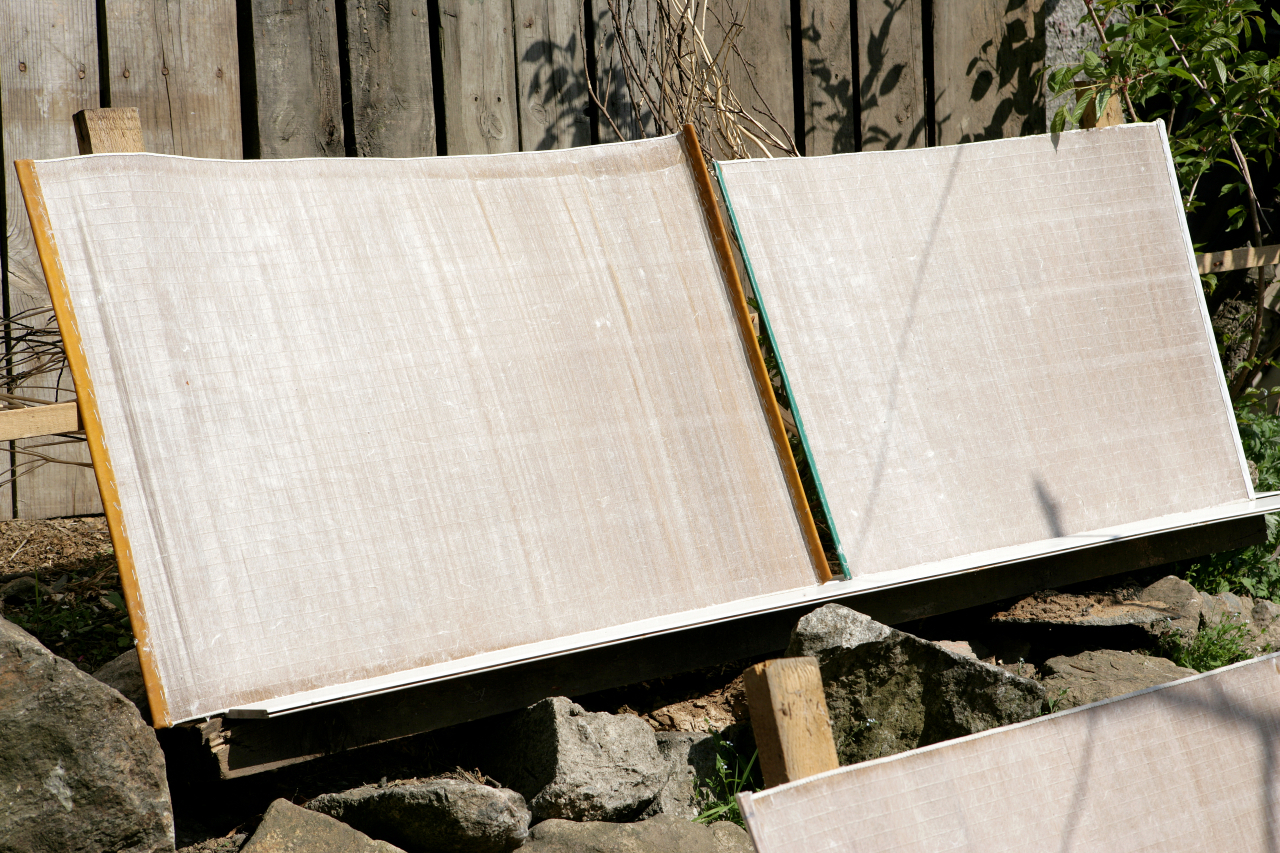Expert in archival, book pathology endorses 'hanji' UNESCO heritage listing
By Park Ga-youngPublished : May 8, 2024 - 18:05

“As someone who has dedicated a lifetime to studying various types of paper for preservation and restoration, I definitely see the value in registering 'hanji' with UNESCO's heritage list, and I believe this is very important,” said Maria Letizia Sebastiani, an authoritative figure in the field of archival and book pathology.
The former director of Italy’s National Institute of Historic Heritage Preservation and Restoration, known as ICPAL, conveyed this to a group of South Korean reporters on Monday at the Korea Cultural Center in Rome, highlighting the significance of hanji, or traditional Korean mulberry paper. According to Sebastiani, hanji plays a crucial role in reviving faded artifacts, including centuries-old archival materials, books and more.
On March 31, the Cultural Heritage Administration submitted a proposal for the evaluation of the "traditional knowledge and skills associated with the production of hanji and related cultural practices in the Republic of Korea" to be added to UNESCO’s Intangible Cultural Heritage List.
The institute Sebastiani worked for before she retired in December 2020, she explained, does not perform restorations unless the historical documents it receives are of significant value.
Since 2015, the ICPAL, which plays a crucial role in developing methodologies for the preservation and restoration of paper-based materials, serving both national heritage and international conservation efforts, tested many different types of hanji, from various scientific perspectives.
The papers used before hanji always had unsatisfactory aspects, but hanji was satisfactory in all respects, thereby replacing "washi," the traditional Japanese paper, previously used at the ICPAL, Sebastiani said.
First tested in 2015 for physical, chemical, and biological attributes, two types of hanji received certification in 2016. Since then, the ICPAL has thoroughly vetted and certified a total of five types of hanji, establishing them as a standard for both national and international projects in collaboration with the institute.

The first restoration work using hanji involved graduate certificates from the 17th and 18th centuries issued by one of Italy's oldest universities, the University of Catania, founded in 1434.
Since then, hanji has been used in major restoration works at the ICPAL, including the Chartula, a 13th-century handwritten prayer parchment by St. Francis of Assisi (1182-1226), a Roman Catholic saint and one of the patron saints of Italy, an illuminated Greek Gospel Book from the 6th century, and Codex on the Flight of Birds by Leonardo da Vinci.
The Rossano Gospels, a collection of the coat of arms of Sardinia, Music Volume 243 in Casanata Library in Rome, and a painting by Pietro da Cortona, a Baroque artist, are also among the artifacts for which hanji has been used for restoration.
In 2020, a student affilated with to ICPAL published a research paper on hanji, detailing its use in restoring documents in Ethiopian documents. Due to Ethiopia's high temperatures, preserving historical documents is challenging as they are highly sensitive and prone to deterioration. Hanji has proven ideal for these restoration efforts because of its durability, she said.
What makes hanji a perfect fit for the task are its very long fibers, Sebastiani said.
“Due to the long fibers, particularly during the bundling process in our work, we cannot help but recognize the excellence of hanji. Moreover, hanji is extremely suitable for restoring documents that contain illustrations,” she noted.
The only problem with hanji for restoration and preservation purposes is its shortage in supply, she said.
"Fortunately, our research institute receives a sufficient supply of hanji from the Korean government through collaboration, so our restoration work is not significantly hindered. However, the problem is that other research institutes in Italy, or those who wish to use hanji, may not be able to obtain the type of hanji certified by us through their own channels," she noted.
Sebastiani now works for the Italian Society of Authors and Publishers, an organization responsible for protecting the copyright of its members, including writers, composers, and publishers, among others.
She noted that the SIAE, which preserves many historical records and owns a large library that houses significant historical theater scripts, other historical documents, and over 70,000 classic theatrical production sketches, is trying to obtain hanji from the ICPAL to use for the restoration of works in the SIAE's vast archive.
"Currently, we are engaged in the restoration and analysis of historical diaries that many people used during their travels in the past. We are also investigating whether these diaries contain any references to Korea as part of our research," she said.



![[Weekender] Geeks have never been so chic in Korea](http://res.heraldm.com/phpwas/restmb_idxmake.php?idx=644&simg=/content/image/2024/05/16/20240516050845_0.jpg&u=)


![[News Focus] Mystery deepens after hundreds of cat deaths in S. Korea](http://res.heraldm.com/phpwas/restmb_idxmake.php?idx=644&simg=/content/image/2024/05/17/20240517050800_0.jpg&u=)

![[KH Explains] Why Korea's so tough on short selling](http://res.heraldm.com/phpwas/restmb_idxmake.php?idx=644&simg=/content/image/2024/05/19/20240519050115_0.jpg&u=20240519162247)
![[Herald Interview] Byun Yo-han's 'unlikable' character is result of calculated acting](http://res.heraldm.com/phpwas/restmb_idxmake.php?idx=644&simg=/content/image/2024/05/16/20240516050855_0.jpg&u=)


![[Photo News] Seoul seeks 'best sleeper'](http://res.heraldm.com/phpwas/restmb_idxmake.php?idx=644&simg=/content/image/2024/05/18/20240518050098_0.jpg&u=)







